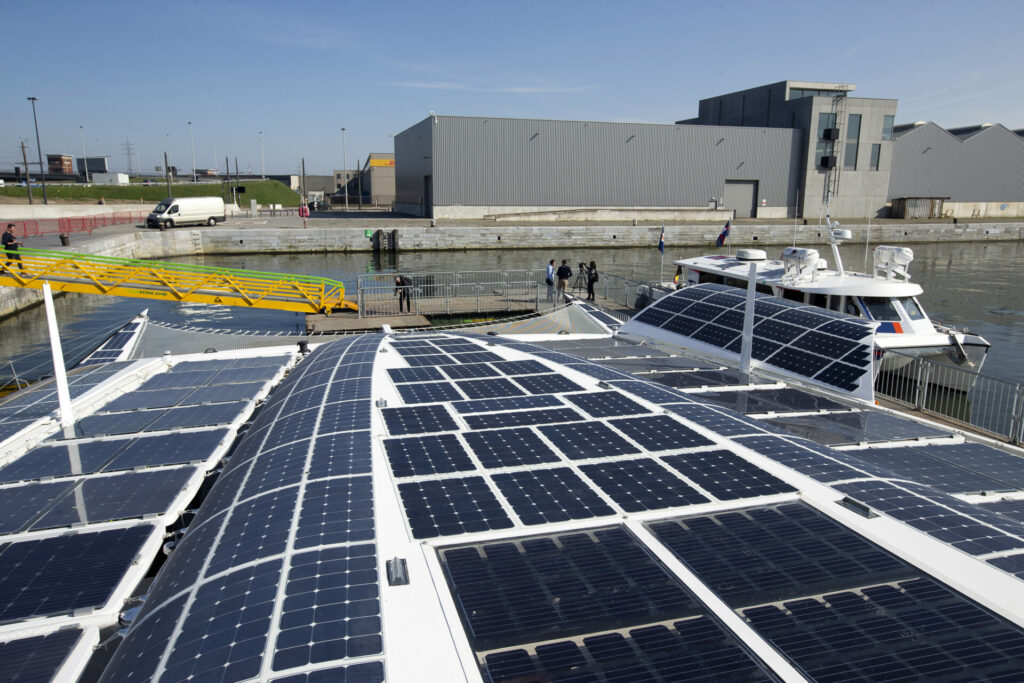Scientists at KU Leuven have taken an important step towards the industrial production of panels that can extract green hydrogen gas from the air. After testing several prototypes, they are now ready for the next step: industrial production. By 2030, they hope to be able to install the panels on the roofs of homes.
Hydrogen is the smallest and lightest of all chemical elements and has a special property: it carries energy. Hydrogen gas is an energy carrier that can store and produce both electricity and heat.
"Hydrogen gas will be important as an energy solution of the future," said researcher Jan Rongé from KU Leuven. "It can be used for many applications. We think in first place of heavy transport, industry and emergency power generators. With cogeneration, you can also generate electricity and heat with it."
No environmental impact?
Hydrogen does not release greenhouse gases or toxic substances when you use it. The condition is that you make hydrogen with clean energy. And that is exactly what bioengineers Jan Rongé, and Tom Bosserez have done. Since 2011, they have been working on a hydrogen panel that converts moisture in the air directly into hydrogen.
The panel captures two things: air and light. Air contains water vapour, and the hydrogen panel uses the sun's energy (light) to split those water molecules into hydrogen and oxygen.
The hydrogen is stored under pressure (with a compressor) or transported via pipelines and can then be used in all kinds of applications. The oxygen gas is simply released back into the air, without impacting the environment.
Bringing the panels to the market
Under the name "The Solhyd Project", Rongé and Bosserez, were given the opportunity to test their ideas. They developed several prototypes of their hydrogen panel and, thanks to support from the Leuven-based company Comate, they were even able to translate these prototypes into a marketable product.
"We are very satisfied that we can turn a research result like this into a marketable product", said Sander Van den dries, director of Comate. "But you can only really speak of an innovation if it is produced, sold and used." To make this possible, the Solhyd research project will become a spin-off company of KU Leuven.
"In this way, we can eventually make the panels in large volumes and distribute them around the world," said Jan Rongé. He is already looking forward to the future: "We expect that from 2030 it will be possible to install hydrogen panels on the roofs of homes."
Some things to consider
Hydrogen can be found everywhere on our planet, in inexhaustible quantities. But it almost never occurs in pure form in nature. Hydrogen atoms cling to all kinds of other atoms: oxygen, for example.
But you can also pry those atoms loose and isolate them, as Rongé and Bosserez do with their hydrogen panels. You then get an invisible, odourless and extremely light gas, H2, which disappears very quickly. And working with that gas is not without risks, because it is highly flammable, just like most fuels. This can be dangerous, especially in closed spaces.
Although there are clear advantages, experts also question the inefficiency of the system: a great deal of the original energy is lost when the hydrogen breaks free from the water, and then there is the storage, the possible transportation and the re-mixing of hydrogen with oxygen or air to consider.
What would they cost?
If, by 2030 as the researchers hope, their hydrogen panel goes on the market, how much will such an installation cost?
"Like any innovative technology, our hydrogen panels will first have higher costs," the Solhyd Project website reads. “With photovoltaic solar panels, however, the cost price has halved in the last 5 years. For hydrogen panels, we foresee a similar evolution. Ultimately, we expect that the cost of a hydrogen panel will be close to a solar panel today."

